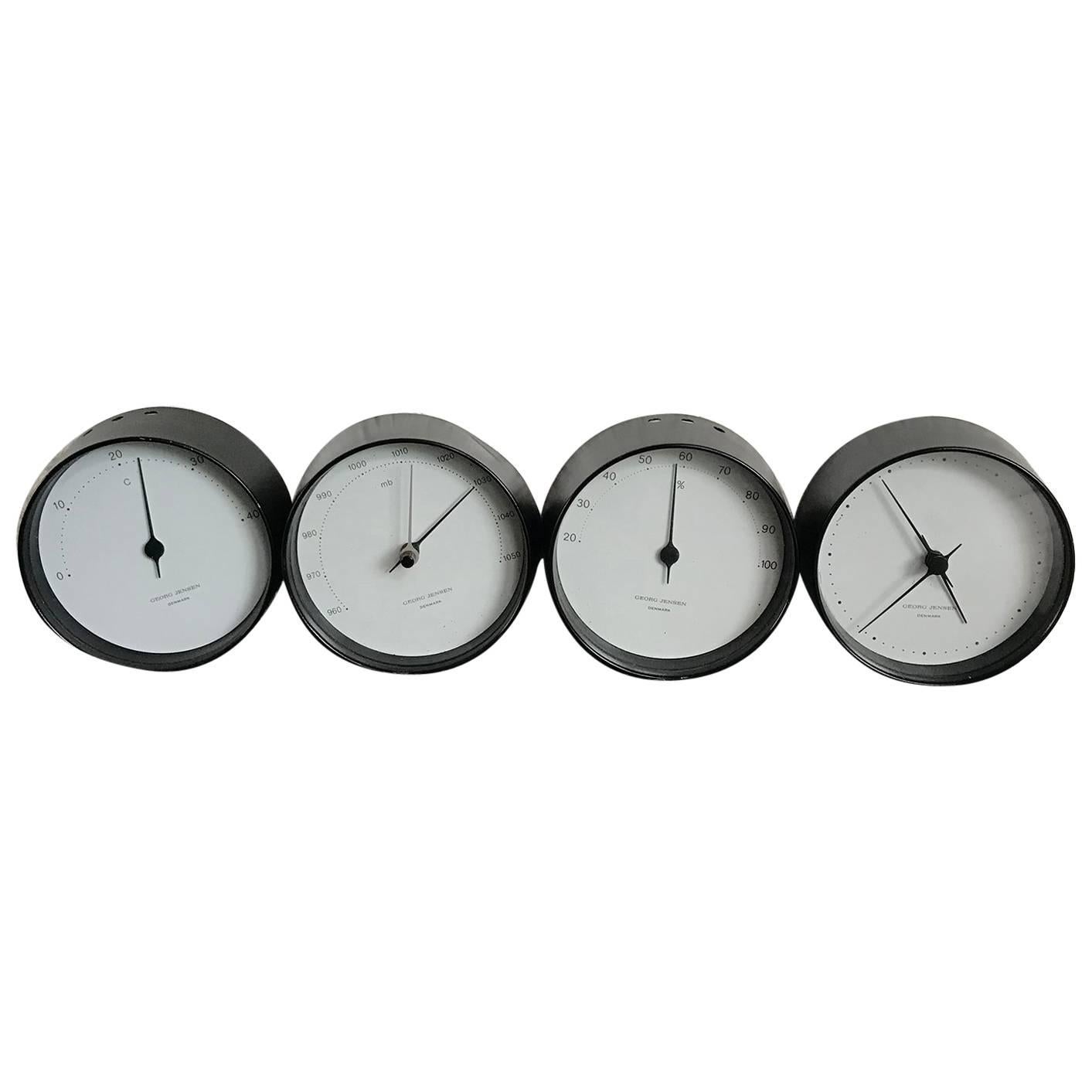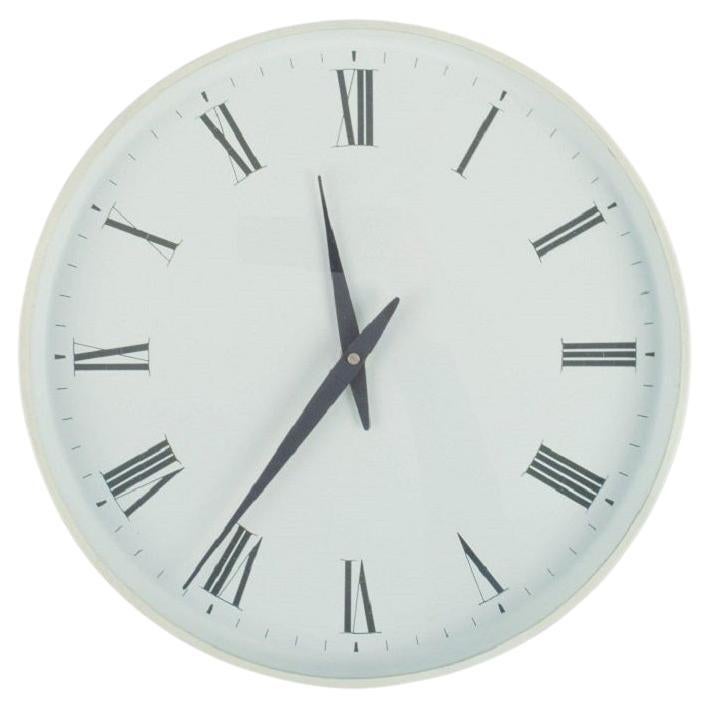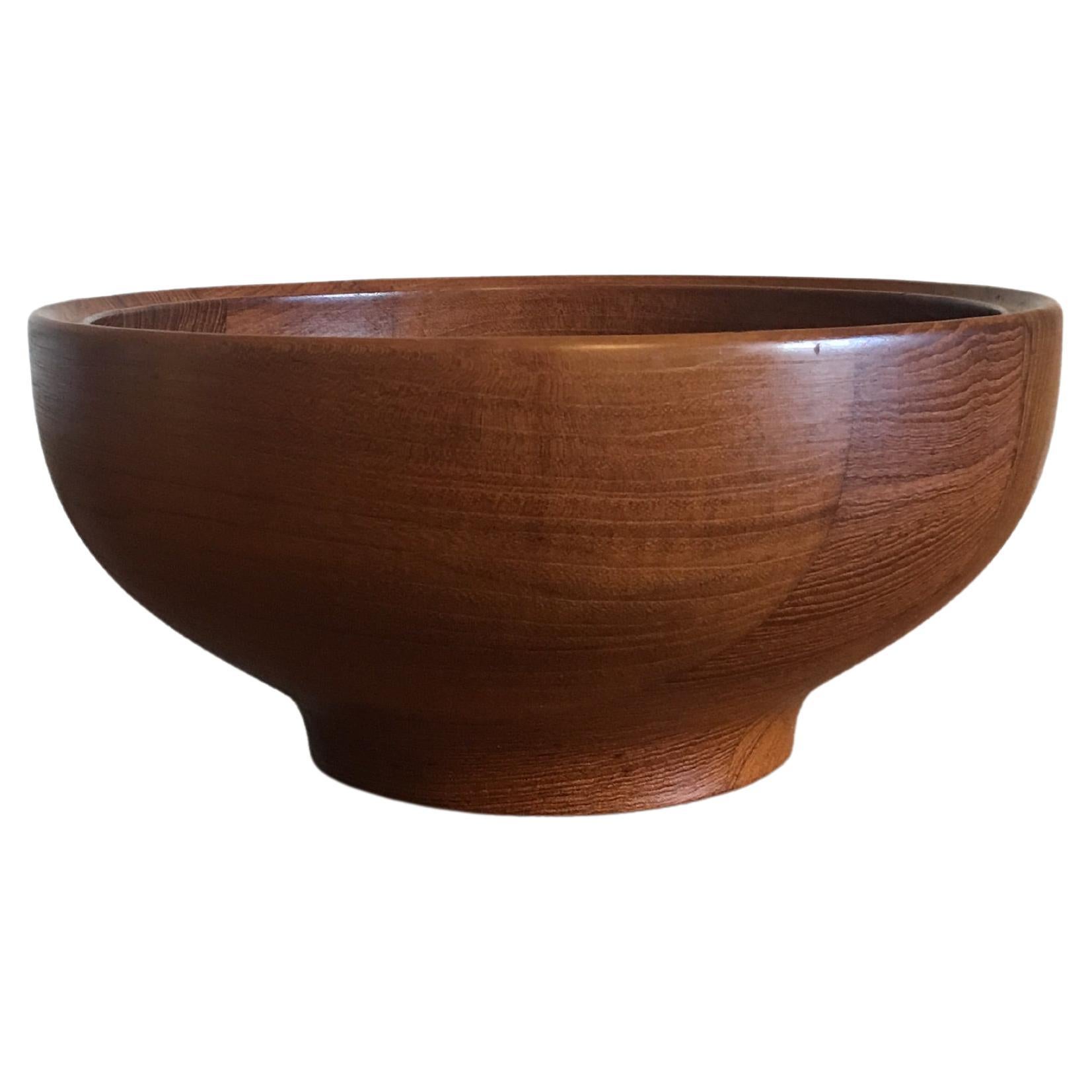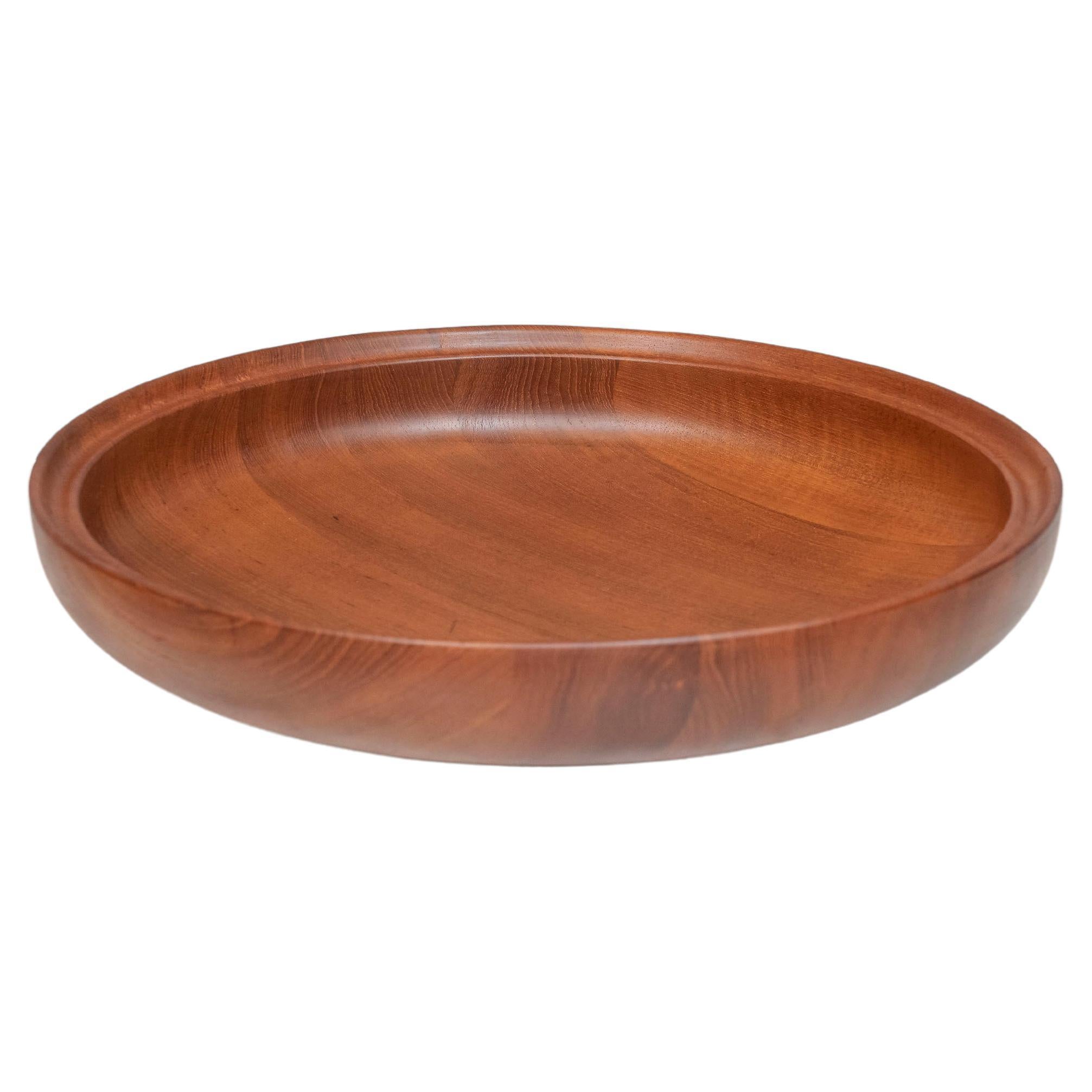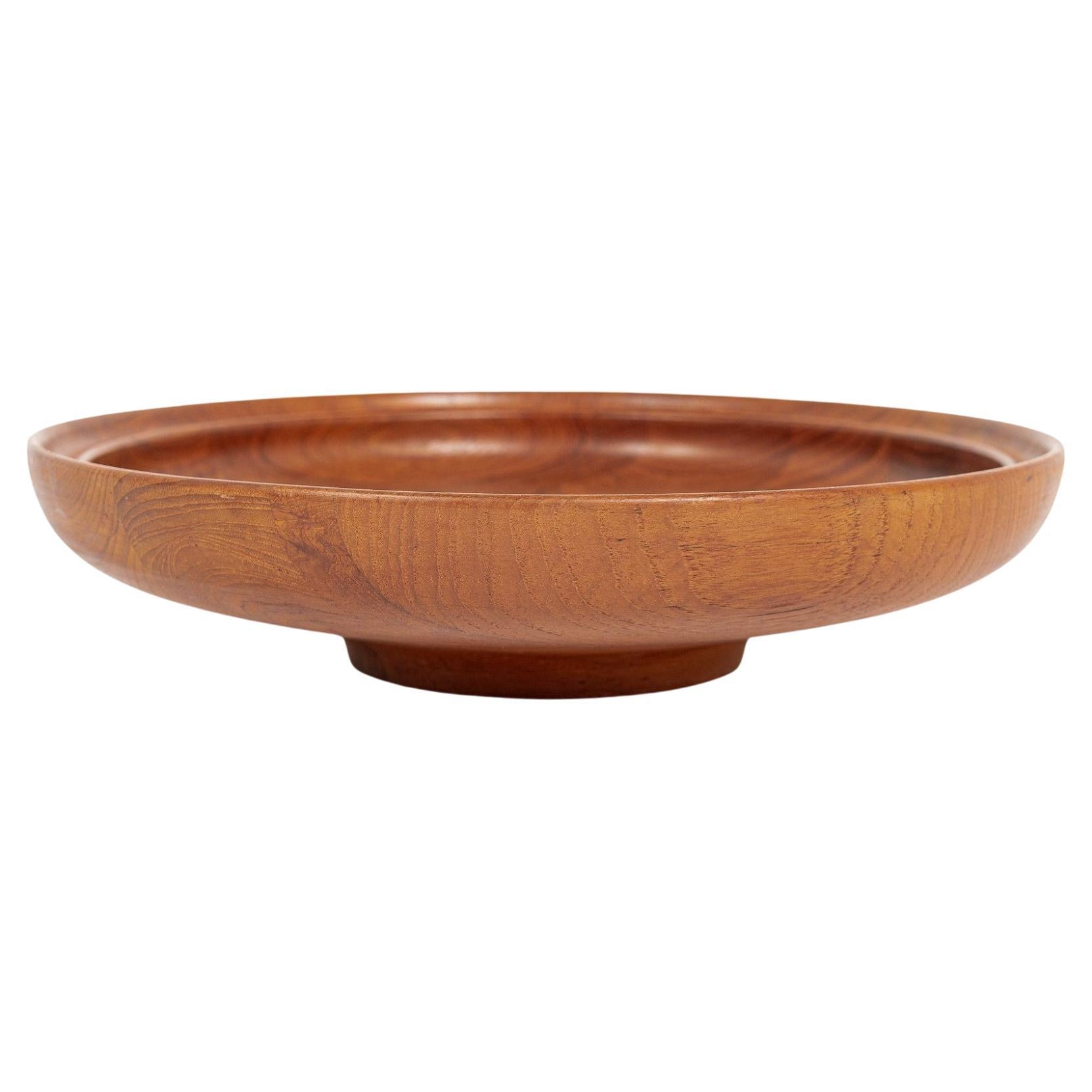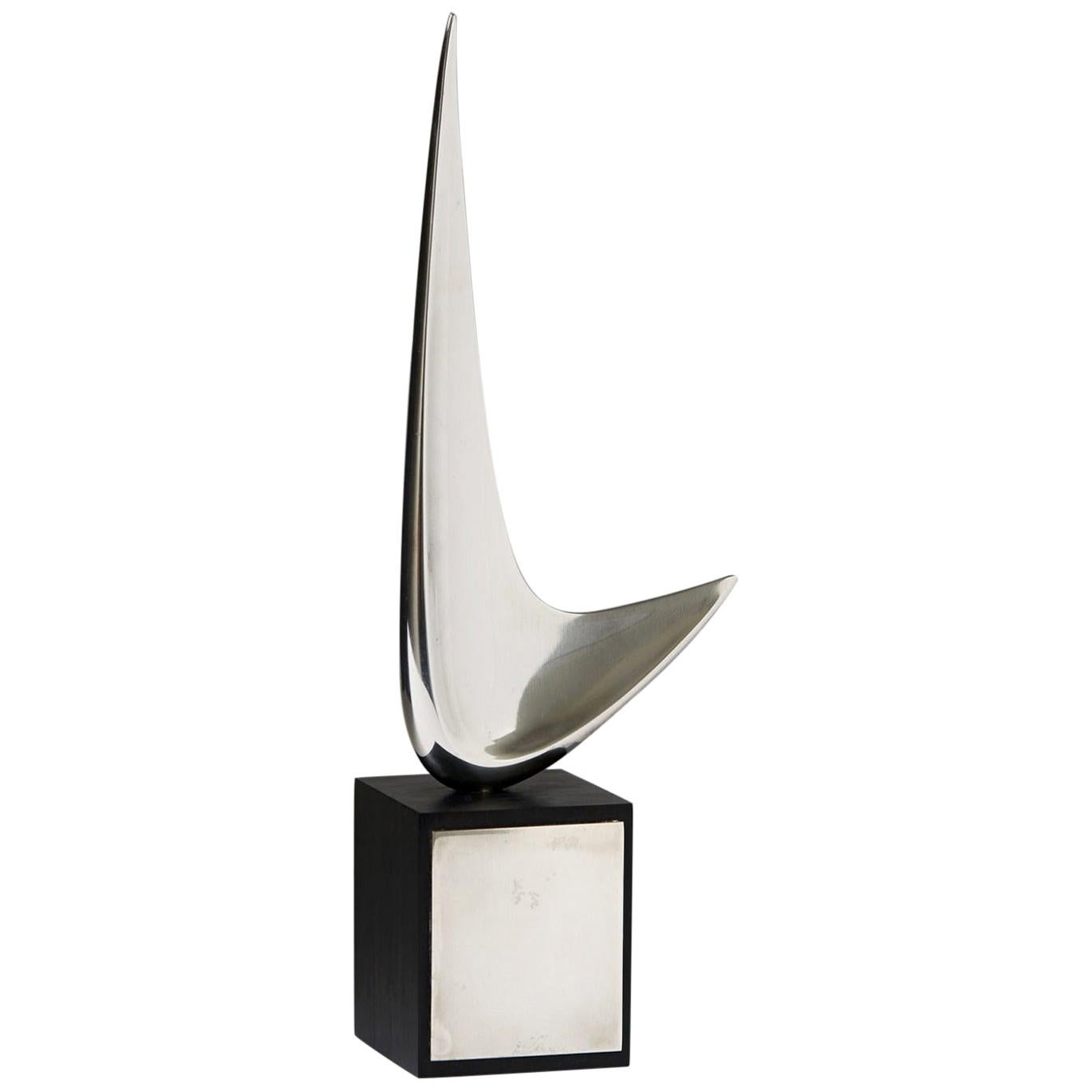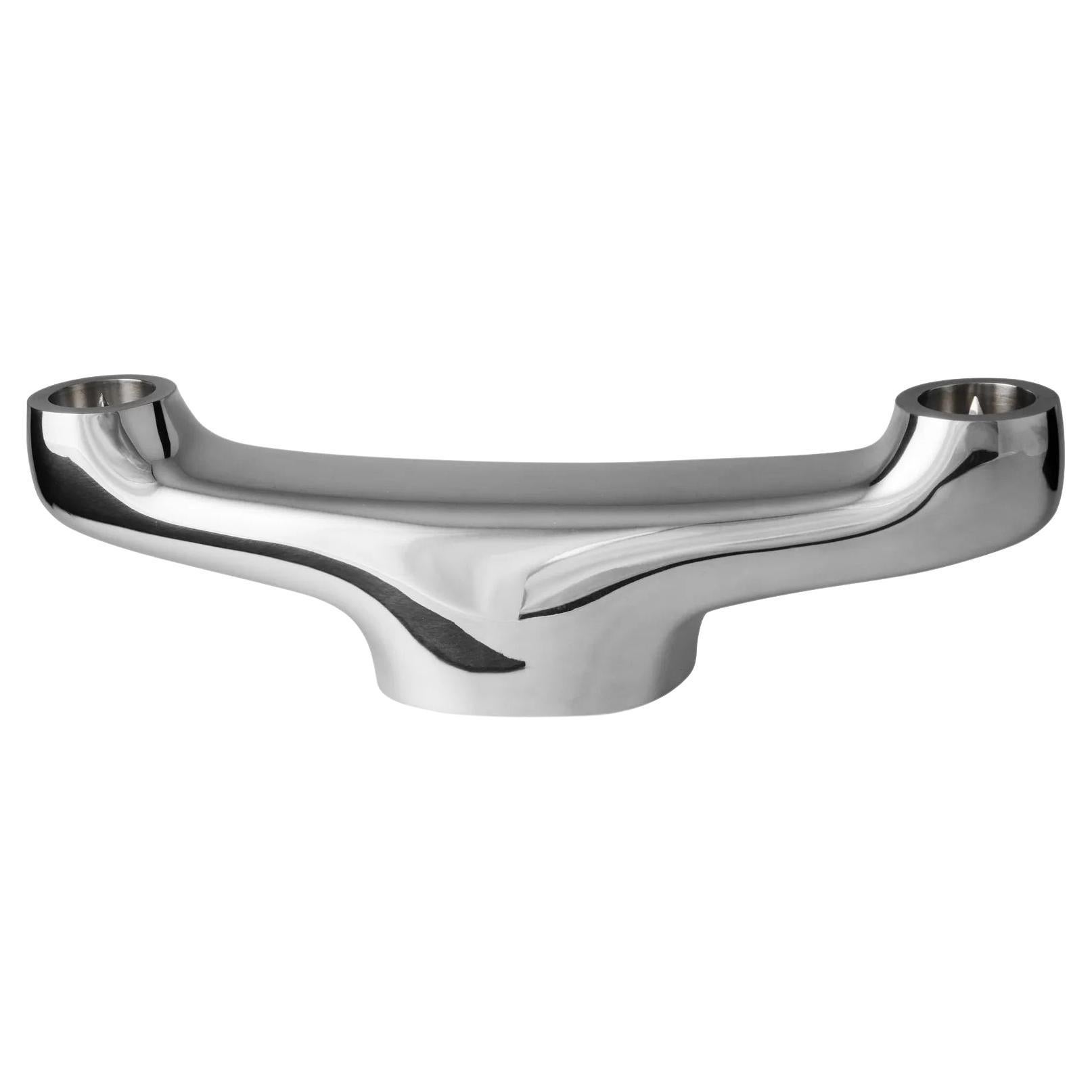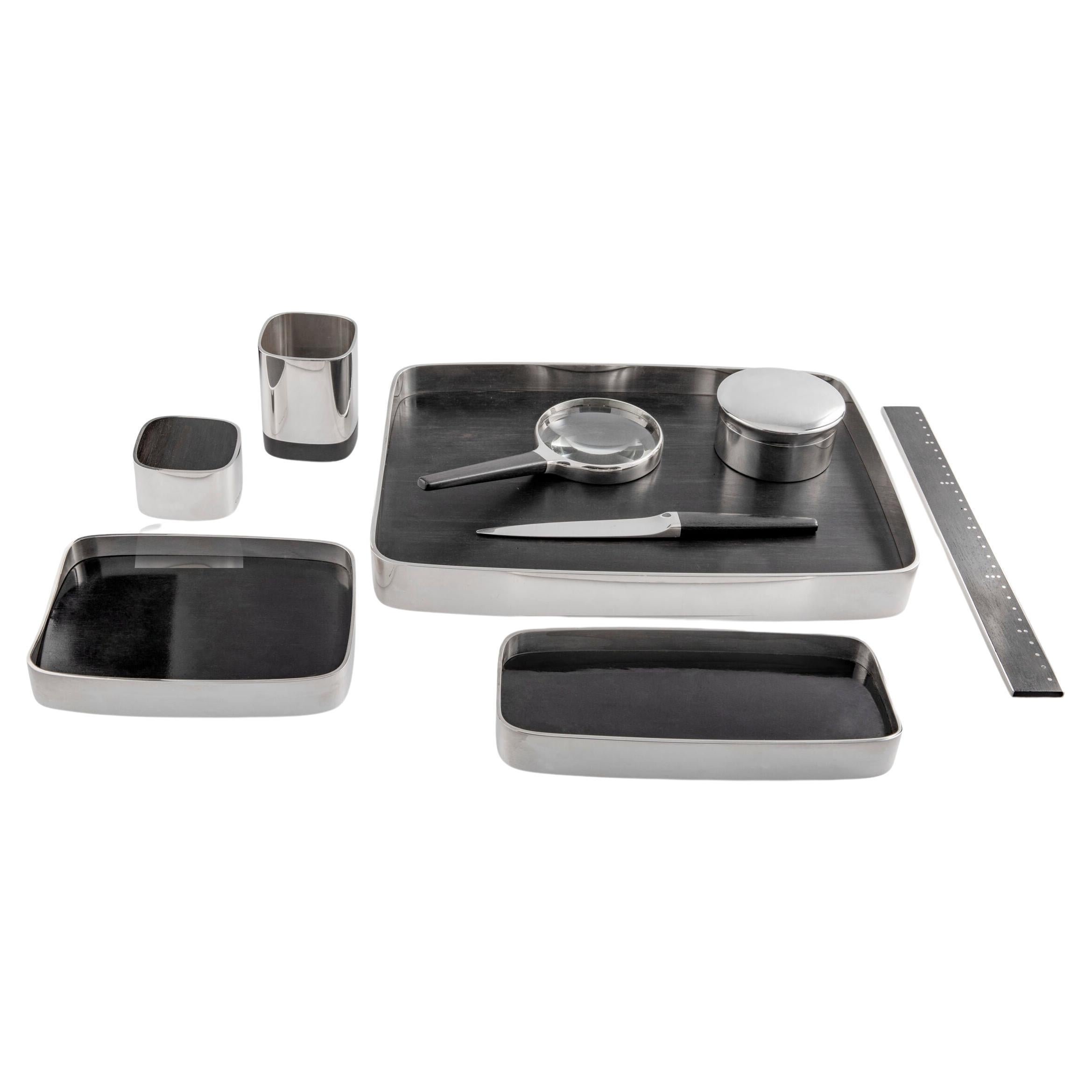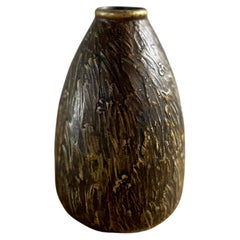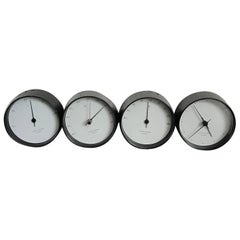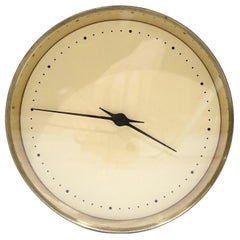
Henning Koppel Brass Wall Clock by Georg Jensen
View Similar Items
Henning Koppel Brass Wall Clock by Georg Jensen
About the Item
- Creator:Georg Jensen (Manufacturer),Henning Koppel (Designer)
- Dimensions:Height: 1.97 in (5 cm)Diameter: 7.09 in (18 cm)
- Style:Scandinavian Modern (Of the Period)
- Materials and Techniques:
- Place of Origin:
- Period:
- Date of Manufacture:1950s
- Condition:Wear consistent with age and use.
- Seller Location:Valby, DK
- Reference Number:1stDibs: LU6559228511162
Georg Jensen
For over a century, Georg Jensen has produced some of the finest objects in Scandinavian modern design, including silver tableware, serving pieces, home decor, jewelry and more, frequently partnering with leading artisans to expand its offerings and respond to shifting tastes. Known for minimal aesthetics that reference nature, the craftsmanship of this legendary Danish silverware firm has regularly married function with thoughtful and beautiful design.
Founder Georg Jensen (1866–1935) was born in the small town of Radvaad, Denmark, and began his training as a goldsmith at 14. After studying sculpture and then training with master silversmith Mogens Ballin, he established his own silver business in Copenhagen in 1904. By 1918, the company was successful enough to open a shop in Paris.
Jensen’s firm produced an incredibly vast range of silver objects, from serving dishes and barware to centerpieces and chandeliers. For his early work, which bore ornate floral details and other organic forms of Art Nouveau, Jensen looked to the splendors of the natural world. The 1905 Blossom teapot, for instance, was topped with a magnolia bud and deftly balanced on toad feet, while some of Jensen’s best-known flatware patterns included Lily of the Valley, introduced in 1913, and Acorn, which debuted in 1915.
Collaboration with outside designers, long before such partnerships were common in design, would lead to some of the company’s most popular and enduring work of the mid-century. Sigvard Bernadotte and Vivianna Torun Bülow-Hübe created collections, as did Henning Koppel, whose curvy 1952 Pregnant Duck pitcher is a Georg Jensen classic.
After evolving and expanding throughout the 20th century, Georg Jensen was acquired by Investcorp in 2012. Today, the company is a global luxury brand with more than 1,000 stores around the world. It continues to produce seductive new pieces, such as a tea service made with Marc Newson in 2015, as well as timeless heritage designs, including the relaunch in 2019 of the 1018 solid sterling-silver Tureen 270. In 2020, the firm introduced the Jardinière 1505. Sculptural and richly decorative, the never-before-realized showpiece is hand-hammered from sheets of the finest sterling silver and is based on a 1915 sketch from Jensen’s archives.
Find an exquisite collection of Georg Jensen serveware, ceramics, silver and glass today on 1stDibs.
- Evan Jensen Bronze Vase, Denmark, 1930sBy Evan JensenLocated in Valby, 84Rare bronze vase attributed Evan Jensen made in Denmark in the 1930s. The vase is made by a unknown danish caster called Antika but is a typical Evan Jensen shaped vase and has typical Evan Jensen detail. The vase is in good condition with a beautiful original patina. Art Deco, short for the French Arts Décoratifs, and sometimes just called Deco, is a style of visual arts, architecture, and product design, that first appeared in France in the 1910s (just before World War I), and flourished in the United States and Europe during the 1920s and 1930s. Through styling and design of the exterior and interior of anything from large structures to small objects, including how people look (clothing, fashion and jewelry), Art Deco has influenced bridges, buildings (from skyscrapers to cinemas), ships, ocean liners, trains, cars, trucks, buses, furniture, and everyday objects like radios and vacuum cleaners. It got its name after the 1925 Exposition internationale des arts décoratifs et industriels modernes (International Exhibition of Modern Decorative and Industrial Arts) held in Paris. Art Deco combined modern styles with fine craftsmanship and rich materials. During its heyday, it represented luxury, glamour, exuberance, and faith in social and technological progress. From its outset, Art Deco was influenced by the bold geometric forms of Cubism and the Vienna Secession; the bright colours of Fauvism and of the Ballets Russes; the updated craftsmanship of the furniture of the eras of Louis XVI and Louis Philippe I; and the exoticized styles of China, Japan, India, Persia, ancient Egypt and Maya art. It featured rare and expensive materials, such as ebony and ivory, and exquisite craftsmanship. The Empire State Building, Chrysler Building, and other skyscrapers of New York City built during the 1920s and 1930s are monuments to the style. In the 1930s, during the Great Depression, Art Deco became more subdued. New materials arrived, including chrome plating, stainless steel and plastic. A sleeker form of the style, called Streamline Moderne, appeared in the 1930s, featuring curving forms and smooth, polished surfaces. Art Deco is one of the first truly international styles, but its dominance ended with the beginning of World War II and the rise of the strictly functional and unadorned styles of modern architecture and the International Style of architecture that followed. This vase is the perfect detail for any interior from the modern Wabi Sabi style...Category
Vintage 1920s Danish Scandinavian Modern Vases
MaterialsBronze
- Evan Jensen Bronze Vase, Denmark, 1930sBy Evan JensenLocated in Valby, 84Evan Jensen bronze art deco vase made by Danish artist Evan Jensen in the 1930s. The vase is in a beautiful original condition and is signed Evan Jensen København Bronze and has model number 155A. The vase is a beautiful decorative element to any interior and the structure of the vase is fantastic with lots of details which will give you endless hours of enjoyment looking at. Art Deco, short for the French Arts Décoratifs, and sometimes just called Deco, is a style of visual arts, architecture, and product design, that first appeared in France in the 1910s (just before World War I), and flourished in the United States and Europe during the 1920s and 1930s. Through styling and design of the exterior and interior of anything from large structures to small objects, including how people look (clothing, fashion and jewelry), Art Deco has influenced bridges, buildings (from skyscrapers to cinemas), ships...Category
Vintage 1930s Danish Scandinavian Modern Vases
MaterialsBronze
- Evan Jensen Bronze Vase, Denmark 1930’sBy Evan JensenLocated in Valby, 84bronze vase by Evan Jensen, crafted in Denmark during the 1930s. Renowned for his mastery of bronze work and innovative designs, Jensen’s pieces are highly sought after by collectors and enthusiasts alike. This stunning vase showcases Jensen’s exceptional craftsmanship and artistic vision, with its graceful silhouette and intricate detailing. The rich patina of the bronze adds depth and character to the piece, while the organic forms and geometric accents create a harmonious balance of tradition and modernity. Standing as a testament to the golden age of Danish design, this vase embodies the principles of Scandinavian craftsmanship and aesthetic refinement. Its versatile design allows it to effortlessly complement a variety of interior styles, from Art Deco to contemporary. Whether displayed as a standalone statement piece or adorned with fresh flowers, this Evan Jensen bronze...Category
Vintage 1930s Danish Scandinavian Modern Vases
MaterialsBronze
- Evan Jensen Bronze Dish, Denmark, 1930sBy Evan JensenLocated in Valby, 84Bronze Art deco dish/charger by Danish artist Evan Jensen from the 1930's in a beautiful original condition, the dish is signed Evan Jensen Copenhagen Bronze and has model number 320. The dish has a very decorative image of a deer on the front. The dish is the perfect dish to have standing as a piece of art but can also be used as a bowl to store stuff like fruit or nuts or whatever else you could think of. Art Deco, short for the French Arts Décoratifs, and sometimes just called Deco, is a style of visual arts, architecture, and product design, that first appeared in France in the 1910s (just before World War I), and flourished in the United States and Europe during the 1920s and 1930s. Through styling and design of the exterior and interior of anything from large structures to small objects, including how people look (clothing, fashion and jewelry), Art Deco has influenced bridges, buildings (from skyscrapers to cinemas), ships, ocean liners, trains, cars, trucks, buses, furniture, and everyday objects like radios and vacuum cleaners. It got its name after the 1925 Exposition internationale des arts décoratifs et industriels modernes (International Exhibition of Modern Decorative and Industrial Arts) held in Paris. Art Deco combined modern styles with fine craftsmanship and rich materials. During its heyday, it represented luxury, glamour, exuberance, and faith in social and technological progress. From its outset, Art Deco was influenced by the bold geometric forms of Cubism and the Vienna Secession; the bright colours of Fauvism and of the Ballets Russes; the updated craftsmanship of the furniture of the eras of Louis XVI and Louis Philippe I; and the exoticized styles of China, Japan, India, Persia, ancient Egypt and Maya art. It featured rare and expensive materials, such as ebony and ivory, and exquisite craftsmanship. The Empire State Building, Chrysler Building, and other skyscrapers of New York City built during the 1920s and 1930s are monuments to the style. In the 1930s, during the Great Depression, Art Deco became more subdued. New materials arrived, including chrome plating, stainless steel and plastic. A sleeker form of the style, called Streamline Moderne, appeared in the 1930s, featuring curving forms and smooth, polished surfaces. Art Deco is one of the first truly international styles, but its dominance ended with the beginning of World War II and the rise of the strictly functional and unadorned styles of modern architecture and the International Style of architecture that followed. This dish is the perfect detail for any interior from the modern Wabi Sabi style...Category
Vintage 1930s Danish Scandinavian Modern Decorative Dishes and Vide-Poche
MaterialsBronze
- Pierre Forsell Brass Lidded Jar Manufactured by SkultunaBy Pierre Forsell, Skultuna, Pierre ForssellLocated in Valby, 84Rare and important Pierre Forsell brass lidded jar manufactured by Skultuna in the 1970’s. The lid is made in solid brass with a lid decorated with a mixture of copper and a chrome metal. This jar is the perfect decorative detail for any interior, it will fit anything from the typical Scandinavian interior to a more traditional interior or a more Art deco type interior. Pierre Oskar Paul Forssell, born 1925 in Stockholm, died 2004, was a Swedish designer, craftsman and silversmith. Forssell worked for Gense from 1952–1964 where he designed the Piruett swivel fork (introduced in 1955 on the H55, launched in 1959) and the Spectra cutlery range (1961). He also carried out work for Skultuna Messingsbruk between the years 1955 and 1986, for example the wall sconces Pendel and Reflex. He also designed sacred art in brass, such as crosses and candlesticks, for several church rooms. Skultuna Messingsbruk (literally, "Skultuna Brass Works") is a Swedish manufacturer of brass and brass products. Founded in 1607 at the behest of King Karl IX, Skultuna Messingsbruk is located in Skultuna on the outskirts of Västerås. The logotype of Skultuna consists of the closed royal crown, the name "Skultuna" and the founding year "1607". In the year 1607, King Karl IX could at last implement his long held plans for a Swedish brass industry. He had a man sent off on the Crown's business to find a suitable location for a brass foundry. The choice fell on Skultuna, where the Svartån brook provided sufficient water power. Charcoal was available here as well, there was a harbor in Västerås and the copper mine at Falun was also close. Skultuna Messingsbruk was founded and the king's decision confirmed in a letter dated 11 February 1607. The work could proceed. The history of the brass foundry During the time of Gustav Wasa...Category
Vintage 1950s Swedish Scandinavian Modern Decorative Bowls
MaterialsMetal, Brass, Copper
- Pair of Patinaed Brass Vases by Pierre Forssell for SkultunaBy Pierre Forsell, Skultuna, Pierre ForssellLocated in Valby, 84Pair of patinaed brass vases by Pierre Forssell for Skultuna. Perfect set of vases for a single flower each or as a decorative object in the interior. The vases are made in solid ...Category
Vintage 1980s Swedish Scandinavian Modern Vases
MaterialsBrass
- 1970, Henning Koppel, Original Early Clock and Weather Station for Georg JensenBy Georg Jensen, Henning KoppelLocated in Amsterdam IJMuiden, NLThis item is part of the private collection of Casey Godrie and is situated in his private house. Ask him for competitive shipping quotes. His incredible Dune Villa, Amsterdam Beach...Category
Vintage 1970s Danish Mid-Century Modern Wall Clocks
MaterialsAluminum
$586 Sale Price / set22% Off - Henning Koppel for Georg Jensen, White Plastic Wall ClockLocated in Copenhagen, DKHenning Koppel for Georg Jensen. White plastic wall clock. Dial with Roman numerals. Clockwork quartz. 1960 / 70's. Measure: Dia...Category
Vintage 1960s Danish Wall Clocks
MaterialsPlastic
- Henning Koppel for Georg Jensen, White Plastic Wall Clock, 1960s-1970sLocated in Copenhagen, DKHenning Koppel for Georg Jensen. White plastic wall clock. Dial with Roman numerals. Clockwork quartz, 1960s-1970s. Measures: Diameter 40 cm. In very good condition.Category
Vintage 1960s Danish Scandinavian Modern Wall Clocks
MaterialsPlastic
$512 Sale Price20% Off - Turned Teak Bowl by Henning Koppel for Georg JensenBy Georg Jensen, Henning KoppelLocated in Arlington, TXThis teak bowl designed by Henning Koppel for Georg Jensen is a beautiful and functional piece that will add a touch of elegance to your home decor. Made from high-quality teak wood,...Category
Vintage 1950s Danish Scandinavian Modern Decorative Bowls
MaterialsTeak
- Georg Jensen Candelabrum 956 Henning KoppelBy Henning KoppelLocated in Hellerup, DKA sculptural sterling silver Georg Jensen three-light candelabra, design #956 by Henning Koppel from 1946. This was Henning Koppel’s first hollowware design for Georg Jensen and was...Category
20th Century Modern Candelabras
MaterialsSterling Silver
- Henning Koppel Teak Bowl for Georg JensenBy Henning KoppelLocated in San Francisco, CAHenning Koppel staved teak bowl for Georg Jensen, Denmark. This seems to be the largest size offered at 19"in. Diameter and 4.75"in. height. In very good original condition, signed.Category
Vintage 1950s Danish Scandinavian Modern Decorative Bowls
MaterialsTeak
Recently Viewed
View AllRead More
Jacqueline Rabun’s Fluid, Minimalist Jewelry Designs Are Inspired by Life Experiences
Motherhood is one of the influences that has shaped the longtime Georg Jensen collaborator's quietly powerful creations.
Sara Story Entertains in Her Festive Hudson Valley Home
The designer mixes heirloom pieces and new favorites to create a traditional-with-a-twist holiday setting.
